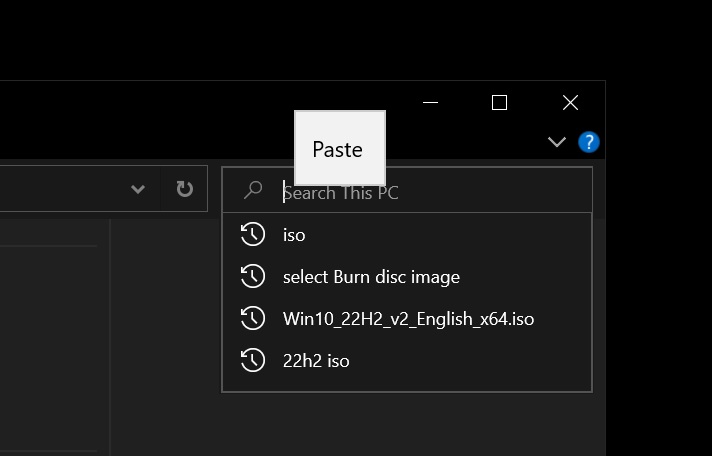The search bar in your File Explorer may look different after installing Windows 10’s December 2023 Update (KB5033372). After the update, you might notice the search bar is smaller vertically, and the classic search without Microsoft 365 or OneDrive integration is back.
When Microsoft released Windows 10 version 19H2 in November 2019, the company said it would be a minor affair, but that wasn’t the case. This feature update dramatically changed the search bar in File Explorer by integrating OneDrive, which lets you directly view files from the cloud in the search results.
In other words, you also searched your OneDrive whenever you used the search box in the File Explorer. Before all this, the search bar was just part of the File Explorer. It showed your search results right there and allowed you to filter through them quickly. But then Microsoft decided to link it with web-based features, similar to the search bar in the taskbar.
This caused a severe performance downgrade, with our tests suggesting that some people may need to wait ages for the box to become responsive and quickly display the search result.
Some people continue to have problems with the search bar in File Explorer, with one user describing in a Feedback Hub post that “File Explorer window does not respond to the search bar. It accepts text but hitting enter on the keyboard doesn’t make it initiate the search, nor does clicking the magnifying glass”.
Windows 10 December 2023 Update turns off web integration in File Explorer
If you’ve just updated your Windows 10 with the December 2023 update (KB5033372), you might notice something different about your File Explorer.

As you can see in the above screenshot, the search bar at the top has returned to how it used to look before November 2019 – smaller and without the extra features like searching in Microsoft 365 or OneDrive.
Here’s the search bar before the December 2023 update:

Microsoft hasn’t documented the “downgrade” in its support document for the December or November 2023 update. However, my sources confirmed this change isn’t a mistake and could be related to the EU’s Digital Services Act, which sets specific privacy rules for tech companies.
The search bar is thinner, like before the Windows 10 19H2 update, and the quick, local search experience is back. But there’s a catch – the search bar doesn’t fit well with the other elements in the File Explorer on some configurations.
That’s because the other elements, like the address bar and buttons, are now larger than the search box. Some of you should be able to fix this by adjusting the display resolution or playing with the accessibility settings.
There’s a chance Microsoft may restore the web-based search box in File Explorer outside Europe in a future update.
If you prefer the slow and OneDrive-powered search box over the classic search, you can re-enable the cloud search using the third-party app “ViveTool“. You can open ViveTool via the command line, type vivetool /enable /id:18755234, and reboot the system.
Or you can uninstall the December 2023 update to return to the cloud-based search bar.
The post Microsoft reverts Windows 10’s File Explorer to pre-19H2 version, removes OneDrive search bar appeared first on Windows Latest
